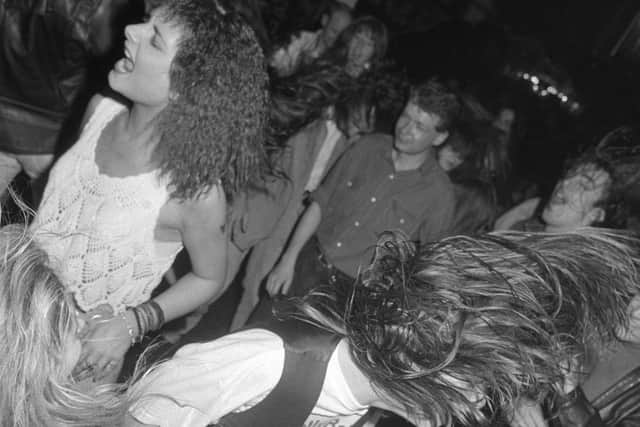Sheffield retro: Looking back at city rock clubs of the 70s and 80s including Rebels and the Wapentake
and live on Freeview channel 276
For anyone that gave heavy metal dancefloors a wide birth as they became common place in the 1970s it generally involves vigorously shaking or nodding one's head in time with the music, often to the rhythm of the drums or guitar riffs.
The origin of headbanging is unclear, but it became popular in the 1970s and 1980s as a way for fans to express their enthusiasm and energy for the music they were listening to. Today, headbanging is still a common sight at heavy metal concerts and festivals, and many fans consider it an integral part of the heavy metal experience.
Advertisement
Hide AdAdvertisement
Hide AdPanic around its supposed ability to cause brain damage became common currency in the 1980s and parents would regularly have nervous breakdowns at the thought of their cherished sons and daughters shaking their head around vigorously for extended periods of time at venue’s like Rebels nightclub on Dixon Lane or the Wapentake Bar which was set under the Grosvenor House Hotel.


This, alarmingly, came at a time heavy metal music was truly exploding with the arrival of big American bands like Motley Crue and Metallica and Sheffield’s very own Def Leppard becoming global icons of the genre. Rock nights were seen as big potential moneyspinners at the time – even the sprawling Roxy threw its hat in the ring with a monthly Monday night dedicated to the genre. Punters would travel from the four corners of the country to be there – all on a school night.
Academic/medical studies have actually taken place into the hazards of headbanging in more recent years. In a study published in the British Medical Journal in 2008, two University of New South Wales (UNSW) researchers concluded that head-banging to a typical heavy metal tempo could cause mild traumatic brain injury or concussion, and neck injury, particularly as the tempo of the music and angle of movement increased.After careful observation of the behaviour of heavy metal concert-goers, McIntosh and honours student Declan Patton constructed a theoretical head-banging model to better understand the mechanics of the practice. They also spoke to a focus group of local musicians to identify ten popular songs to head-bang to.
"These songs had an average tempo of 146 beats per minute, and at this tempo we predict that head banging can cause headaches and dizziness if the range of movement of the head and neck is greater than 75°," the researchers wrote.
Advertisement
Hide AdAdvertisement
Hide AdUnfortunately for McIntosh, who confesses to not being a heavy metal fan, the research involved attending several heavy metal concerts of bands including Motley Crue, Ozzy Osbourne and Motorhead to identify the most popular head-banging techniques. Professor McIntosh, whose research focuses on the biomechanics of head injury and concussion, says this type of temporary, mild brain injury was generally poorly understood, but was unlikely to lead to any more serious symptoms than headaches and dizziness.
•Content supplied by Neil Anderson. You can check out the ‘Dirty Stop Out’s Guide to Sheffield – Rebels Edition’ and ‘Dirty Stop Out’s Guide to Sheffield – Wapentake Edition’ at www.dirtystopouts.com
